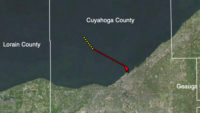A proposed $150-million wind farm in Ohio's Champaign County cleared a major hurdle with a March 6 ruling by the Ohio State Supreme Court to back the state’s decision to allow construction to begin on the 9,000-acre site situated in a largely rural community just west of Columbus.
A group of landowners in Urbana, the county’s largest city was appealing the Ohio Power Siting Board’s (OPSB) approval of the 50-plus turbine, 125 MW project under development by Buckeye Wind LLC, a subsidiary of New York City-based EverPower Wind Holdings.
The landowners were concerned about safety risks and the possibility of the turbines lowering their property values. The plaintiffs argued that the OPSB had omitted key details about the project and disputed the planned 541-ft setback from the turbines to their homes was insufficient.
By a 4-3 vote, the Court ruled in favor of the OPSB with Justice Judith Ann Lanzinger writing in the majority decision that the agency “followed statuatory requirements” in establishing all conditions for the project. “Simply because certain matters are left for further review and possible public comment does not mean they have been improperly delegated to the staff,” she wrote.
In the dissenting opinion, Justice Evelyn Lundberg Stratton said that Buckeye Wind’s proposed 541-ft setback was accepted by the OPSB without public review.
Jack A. Van Kley, attorney for the landowners, said three separate turbine manufacturers—GE Energy, Nordex and Vestas Wind Systems—recommend setbacks of at least 984 ft.
Daniel Lagiovane, a spokesman for EverPower, which was not involved in the lawsuit, said the company has worked hard to keep the community informed of its plans since the project was first proposed.
“We’ve been very open throughout this process,” he said. “We’re glad to let the community be a part of it, but the [court's] majority decision says exactly what we’ve believed all along—everything has been aboveboard and there are no safety risk involved.”
The so-called Buckeye Wind Project is actually the first of what will eventually be two projects. The second wind farm will likely be between 72 and 150 MW, but work on that phase is not expected to begin this year. Lagiovane said the landowners’ appeal of the OPSB's ruling and the ensuing lawsuit slowed the company’s negotiations with turbine manufacturers but he expects to purchase the turbines in the coming months, adding that construction will likely begin later this year.
A contractor for the six-month construction phase has not yet been named as the company is still in the process of obtaining permits and drafting its request for proposals.
Van Kley said the landowners will continue to monitor the development of both phases of the project.
“The court made it clear that if the farm changes its design that causes additional harm we’d have a right to an additional hearing,” he said. “We intend to hold them to that. We also will be involved as they try to get their final approval for Phase 2. It’s far from over.”


Post a comment to this article
Report Abusive Comment